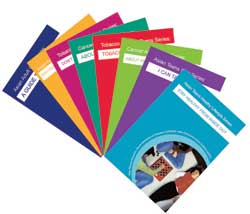Study shows how differing Asian cultures and attitudes impact cancer screening rates
|
The Asian continent has nearly four billion people living in 47 different countries, and each of these groups has their own unique set of health issues. But when they come to the United States, they’re often lumped into one large demographic: “Asian/Pacific Islander.” Health researchers say this makes it difficult to learn about each group’s specific needs, particularly in regard to cancer, one of the leading killers of Asian-Americans. “There is an assumption that Asians are at low risk for developing cancers, due to the inclusion of more than 60 Asian nationalities into one category,” said Grace X. Ma, a professor of public health in the College of Health Professions and Social Work. |
 Credit Center for Asian Health
Researchers at the Center for Asian Health say the key to improving the disparity in cancer rates among Asian immigrants is to improve screening rates. The Center works with members and leaders in the community to help improve access these life saving tests.
|
| In a study published this month in the American Journal of Health Behavior, Ma breaks down the attitudes and rates related to cancer screenings among the four largest groups of Asian-Americans: Chinese, Korean, Vietnamese and Cambodian.
These groups are also at higher risk for various types of cancer:
While life-saving in many instances, cancer screenings have been shown to be relatively low across the “Asian/Pacific Islander” category, but there has yet to be a detailed comparison of rates across subgroups until Ma’s study – due in large part to small sample sizes, as well as the fact that most national surveys on cancer tend to be in English. “Almost 70 percent of Asian-Americans are foreign born, so surveys that are English-only are not reaching the heart of the community – the very people who need the most help,” said Ma, director of the Center for Asian Health. For this study, the Center worked with several organizations based in the Asian communities of Philadelphia, New Jersey and New York City to recruit 2011 Asian-Americans to determine their cancer screening rates and attitudes towards testing. Nearly half of the participants were Chinese; 19 percent Korean; 18 percent Vietnamese and nearly 17 percent Cambodian. Each participant was given a multilingual questionnaire that touched on six key areas: demographics, screening behaviors, perceived barriers to being tested, perceptions of health; access to health care; and satisfaction with access to healthcare. Researchers found that Cambodian-Americans were least likely to get screened for breast, cervical, prostate or colorectal cancer. Chinese-Americans were most likely to get screened for these, followed by Vietnamese-Americans for breast and cervical cancer, and Korean-Americans for prostate, colorectal and HBV screenings.
|
|
 |
However, a high number of recipients across all four groups reported never being screened for prostate cancer (over 78 percent in men over 50), colorectal cancer (almost 80 percent in respondents over 50), and HBV (over 71 percent in respondents over 18). Ma said she is disturbed by the findings. “They show a big gap in the use of preventive health services, and provide us with a clear, tangible picture of some of the most critical priorities in the Asian community, and where we need to focus our efforts the most.” |
|
Given the benefits of early detection, she sees a clear need for a range of cultural and language sensitive interventions to stress the need of education and access to preventive care, the current focus of her research.
In July of this year, Ma received an Outstanding Scientific Publication Award from the National Institutes of Health for her research, which has been ground-breaking in the field. She and her team at the Center rely on community-based preparatory research – that is, working directly with community leaders and members – to deliver various health messages that are sensitive to the diverse Asian-American communities. “Because many Asian immigrants are medically uninsured, and have limited or no access to things like cancer screenings, it can lead to a late diagnosis and a worse prognosis,” she said. “Prevention and early detection could help close the gap on some of these disparities.” |
|